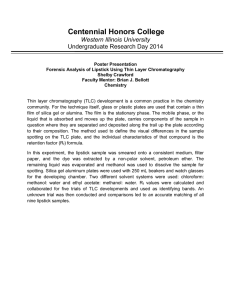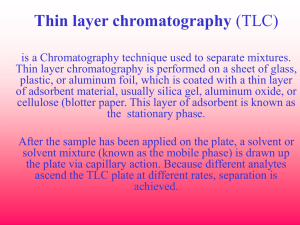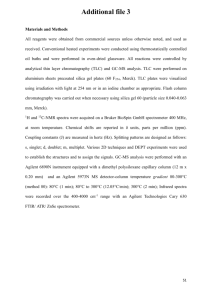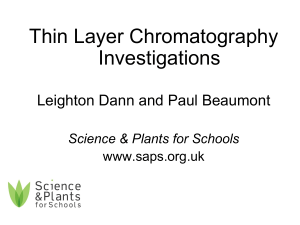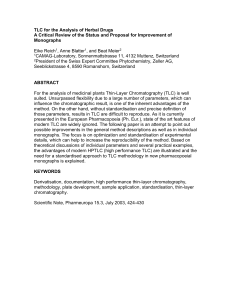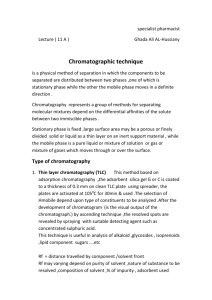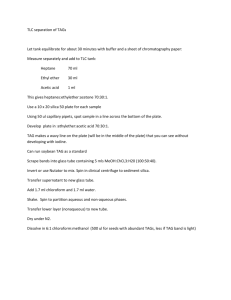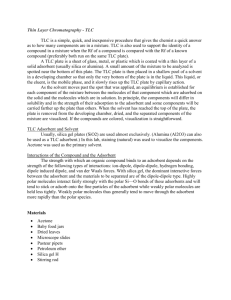Thin layer chromatography (TLC) is a chromatography technique
advertisement
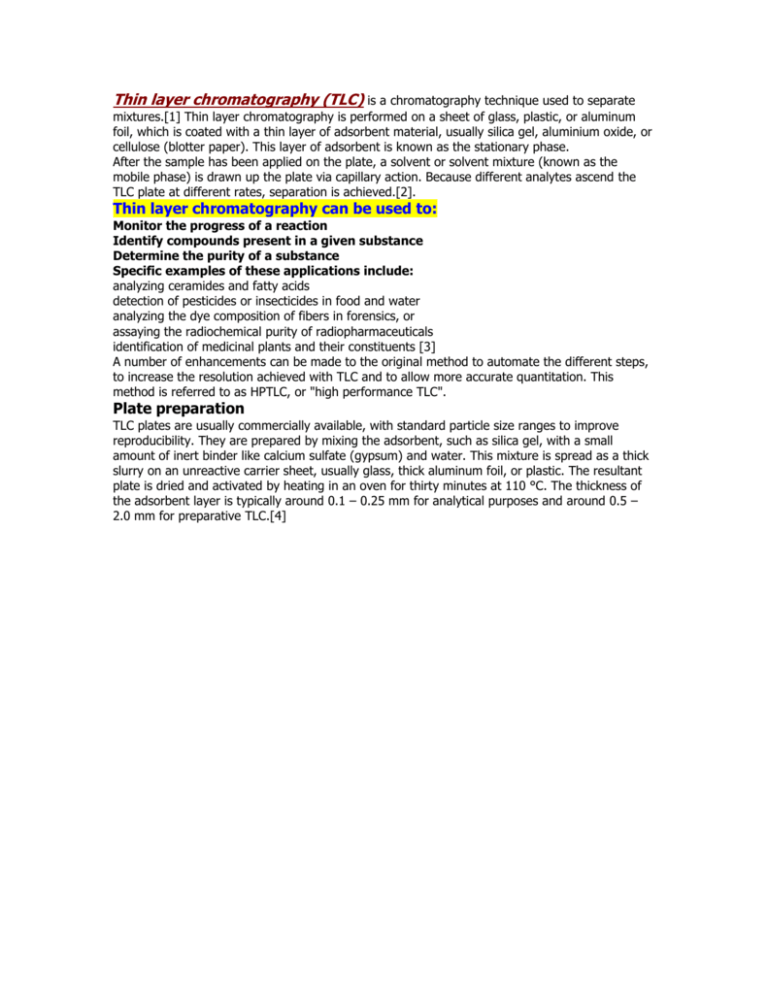
Thin layer chromatography (TLC) is a chromatography technique used to separate mixtures.[1] Thin layer chromatography is performed on a sheet of glass, plastic, or aluminum foil, which is coated with a thin layer of adsorbent material, usually silica gel, aluminium oxide, or cellulose (blotter paper). This layer of adsorbent is known as the stationary phase. After the sample has been applied on the plate, a solvent or solvent mixture (known as the mobile phase) is drawn up the plate via capillary action. Because different analytes ascend the TLC plate at different rates, separation is achieved.[2]. Thin layer chromatography can be used to: Monitor the progress of a reaction Identify compounds present in a given substance Determine the purity of a substance Specific examples of these applications include: analyzing ceramides and fatty acids detection of pesticides or insecticides in food and water analyzing the dye composition of fibers in forensics, or assaying the radiochemical purity of radiopharmaceuticals identification of medicinal plants and their constituents [3] A number of enhancements can be made to the original method to automate the different steps, to increase the resolution achieved with TLC and to allow more accurate quantitation. This method is referred to as HPTLC, or "high performance TLC". Plate preparation TLC plates are usually commercially available, with standard particle size ranges to improve reproducibility. They are prepared by mixing the adsorbent, such as silica gel, with a small amount of inert binder like calcium sulfate (gypsum) and water. This mixture is spread as a thick slurry on an unreactive carrier sheet, usually glass, thick aluminum foil, or plastic. The resultant plate is dried and activated by heating in an oven for thirty minutes at 110 °C. The thickness of the adsorbent layer is typically around 0.1 – 0.25 mm for analytical purposes and around 0.5 – 2.0 mm for preparative TLC.[4]
